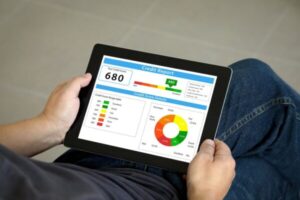A Vehicle Is Costly
Safety and property value are difficult to manage when you’ve got non-liquid assets. Cars depreciate much more quickly, and there are other motorists to contend with. There’s no two ways about it: driving a car is costly.
You’ve got gas, insurance, repairs, traffic tickets, accidents, and monthly payments to take into consider. Still, there are ways to reduce these costs substantially if you’re strategic. Following are seven strategies to this effect.
- Start With A “Cheap” Vehicle
Full coverage insurance can be $1k or more a year. If you’re a teenage driver, it’s going to be higher. The younger you are, the more inexperienced you’ll be, and the greater the likelihood you’re going to make dumb mistakes. Don’t get up in arms, that’s just reality. Accept it, and instead of fighting against it, work with it.
Don’t get a great, beautiful, sparkling car when first you get the chance. Get a beater. Get a vehicle that likely won’t last longer than two years, then make it last longer through willpower and maintenance. If you pay $2k or less on a car, there’s no need for full-coverage insurance; get the bare minimum. If you total it, you’ve got liability covered, and you weren’t planning on keeping that vehicle until you were mature anyway. Ten $2k vehicles over 20 years are less than one $30k vehicle over ten years.
- Drive Strategically And Defensively
It’s absolutely integral that you plan out your drives. How many miles are you going? How many miles do you get per gallon? You should know this information off the top of your head, as well as your vehicle’s ability to perform in hilly terrain, in the city, or in the countryside. When you know your operational radius, you can maximize each mile.
When you couple with that a defensive driving strategy, you can avoid the majority of accidents. Defensive driving requires driving “ahead” of your vehicle. You’re thinking about where other cars and traffic will be ahead of where you presently are, so you can anticipate and react should things transpire differently. You don’t want to have to make an insurance claim; sometimes you’ll get your money, other times you’ll need a lawyer.
- Ensure You Regularly Maintain Your Vehicle
Flush the transmission, change the oil, change the belts, wash the vehicle, and change the tires. Consult the manual of your vehicle—or barring that, find a manual online—to determine where regularly scheduled maintenance is necessary. Never neglect this unless you have no choice.
- Consult Trusted Resources
It’s not a bad idea to check out Driving Guide, a website covering these and other tips to help you keep your vehicle out of the ditches and your wallet healthy. Additionally, talk to long-term road-savvy people. Parents, relatives, those who drive semi-trucks or live out of an RV: all can be invaluable resources in helping you save money through avoiding common pitfalls.
- Never Buy New Vehicles
What are you, a movie star? What’re you paying $30k on a car for? And that doesn’t include interest over time. You might pay $60k for that car by the time you’re done, and when it’s yours free and clear, it isn’t worth anything because it has depreciated. Here’s a better strategy: buy the car outright, and go used to save your wallet.
A bank loan is better than paying monthly on a car; at least you fully own the asset at that point, and you’re paying back a loan rather than a dealership who can repo your ride to work. $5k is the sweet spot, you can come up with that in a year; just don’t eat out and brew your own coffee.
- Avoid Driving When Possible
Walk. Ride a bike. Take public transit. Carpool. Cut down the amount of time you actually spend driving, and you’ll save yourself money in terms of maintenance, wear-and-tear, depreciation, and gasoline. If you can avoid driving, do so.
- Learn To Do Your Own Repairs
All you’ve got to do to change the oil is unscrew the nut on the bottom, let it drain out, switch out the oil filter, and poor in some new oil. (Ensure the old oil goes in a pan, bucket, or something else you can use to properly dispose of it.)
You can also change your own tires and windshield wipers, your own battery, and many internal components with little trouble. It’s basically a matter of unhooking the old component and installing a new one. The only difficulty is when you have to get at components nestled behind large parts. Still, most maintenance you can do yourself, and it’ll save you hundreds—if not thousands—of dollars.
Save Thousands Annually
Buy used, avoid driving when possible, use trusted resources like online authorities or family members, keep maintenance up to date, do your own repairs, learn to drive on a “beater”, and strategically, defensively plan out trips. You will save; likely thousands of dollars annually. Consider your present situation and apply relevant tactics.



